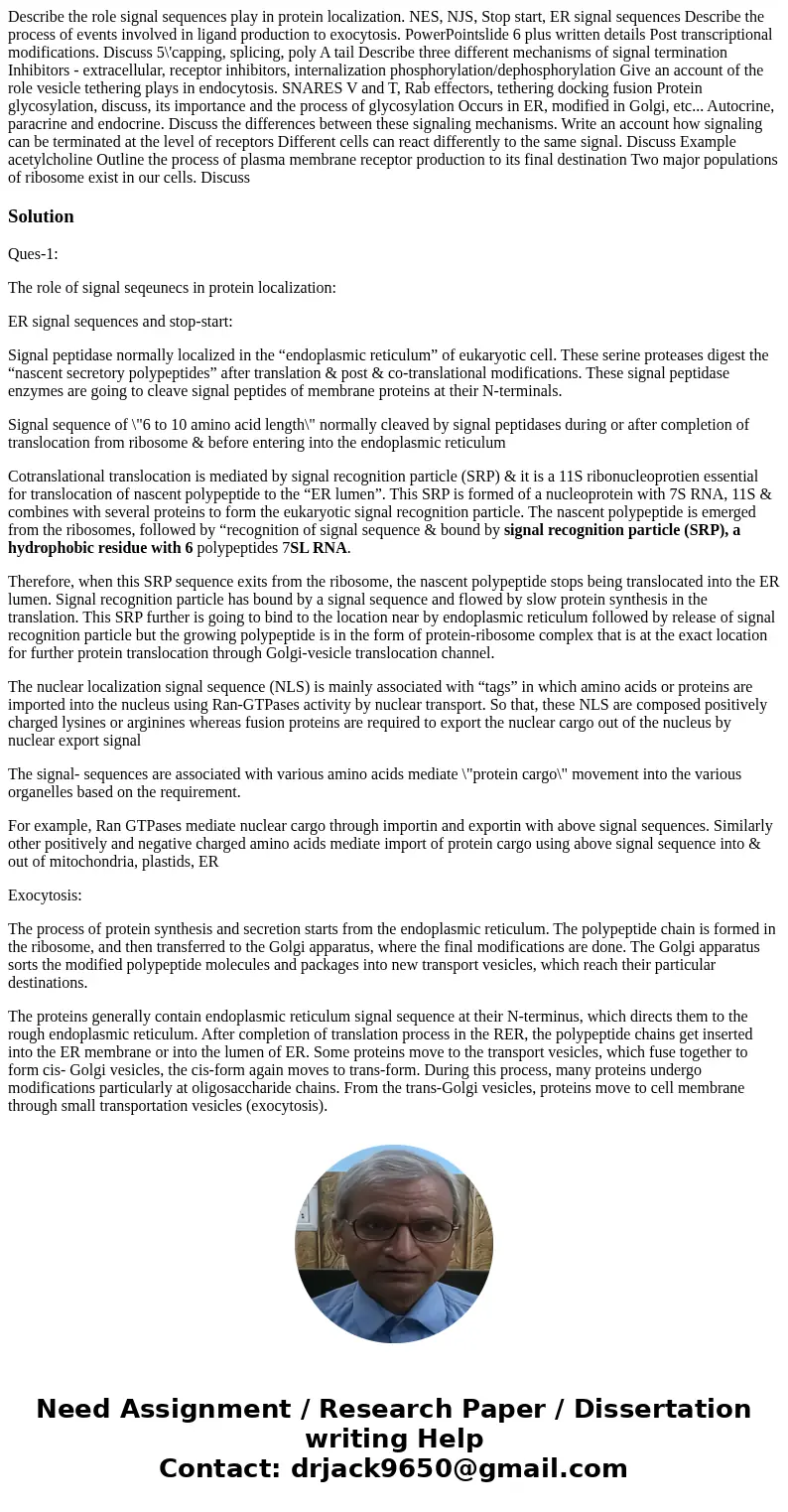Describe the role signal sequences play in protein localizat
Solution
Ques-1:
The role of signal seqeunecs in protein localization:
ER signal sequences and stop-start:
Signal peptidase normally localized in the “endoplasmic reticulum” of eukaryotic cell. These serine proteases digest the “nascent secretory polypeptides” after translation & post & co-translational modifications. These signal peptidase enzymes are going to cleave signal peptides of membrane proteins at their N-terminals.
Signal sequence of \"6 to 10 amino acid length\" normally cleaved by signal peptidases during or after completion of translocation from ribosome & before entering into the endoplasmic reticulum
Cotranslational translocation is mediated by signal recognition particle (SRP) & it is a 11S ribonucleoprotien essential for translocation of nascent polypeptide to the “ER lumen”. This SRP is formed of a nucleoprotein with 7S RNA, 11S & combines with several proteins to form the eukaryotic signal recognition particle. The nascent polypeptide is emerged from the ribosomes, followed by “recognition of signal sequence & bound by signal recognition particle (SRP), a hydrophobic residue with 6 polypeptides 7SL RNA.
Therefore, when this SRP sequence exits from the ribosome, the nascent polypeptide stops being translocated into the ER lumen. Signal recognition particle has bound by a signal sequence and flowed by slow protein synthesis in the translation. This SRP further is going to bind to the location near by endoplasmic reticulum followed by release of signal recognition particle but the growing polypeptide is in the form of protein-ribosome complex that is at the exact location for further protein translocation through Golgi-vesicle translocation channel.
The nuclear localization signal sequence (NLS) is mainly associated with “tags” in which amino acids or proteins are imported into the nucleus using Ran-GTPases activity by nuclear transport. So that, these NLS are composed positively charged lysines or arginines whereas fusion proteins are required to export the nuclear cargo out of the nucleus by nuclear export signal
The signal- sequences are associated with various amino acids mediate \"protein cargo\" movement into the various organelles based on the requirement.
For example, Ran GTPases mediate nuclear cargo through importin and exportin with above signal sequences. Similarly other positively and negative charged amino acids mediate import of protein cargo using above signal sequence into & out of mitochondria, plastids, ER
Exocytosis:
The process of protein synthesis and secretion starts from the endoplasmic reticulum. The polypeptide chain is formed in the ribosome, and then transferred to the Golgi apparatus, where the final modifications are done. The Golgi apparatus sorts the modified polypeptide molecules and packages into new transport vesicles, which reach their particular destinations.
The proteins generally contain endoplasmic reticulum signal sequence at their N-terminus, which directs them to the rough endoplasmic reticulum. After completion of translation process in the RER, the polypeptide chains get inserted into the ER membrane or into the lumen of ER. Some proteins move to the transport vesicles, which fuse together to form cis- Golgi vesicles, the cis-form again moves to trans-form. During this process, many proteins undergo modifications particularly at oligosaccharide chains. From the trans-Golgi vesicles, proteins move to cell membrane through small transportation vesicles (exocytosis).

 Homework Sourse
Homework Sourse